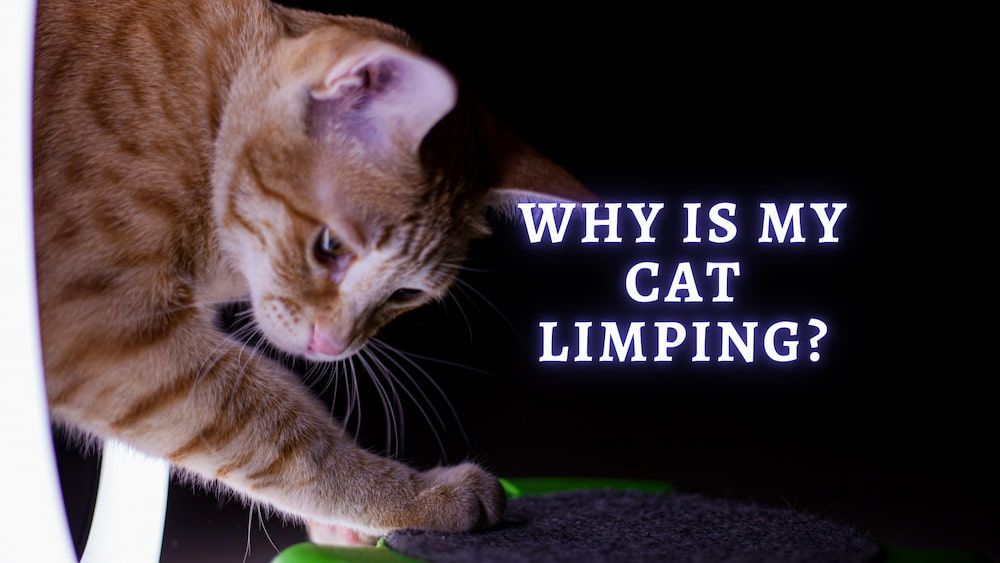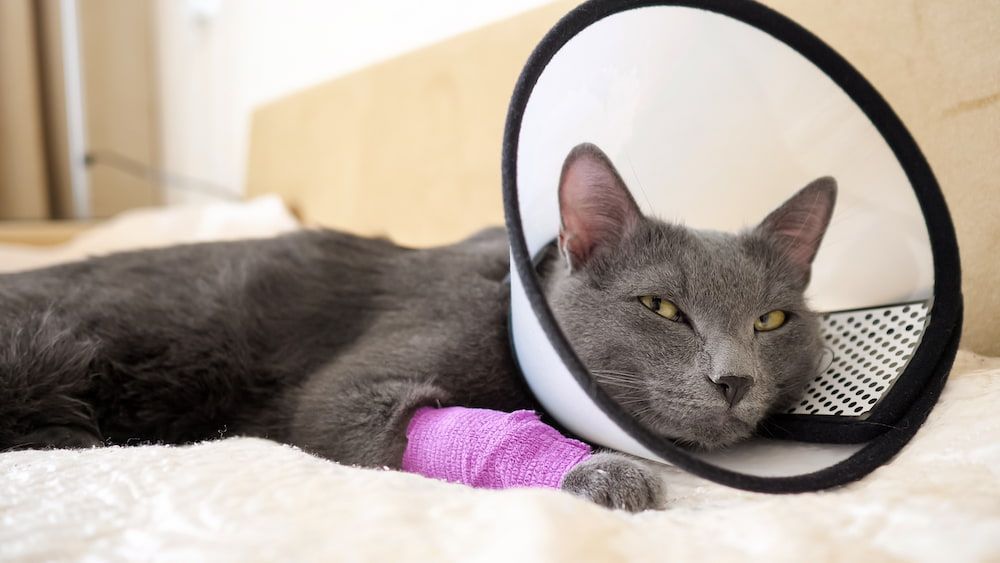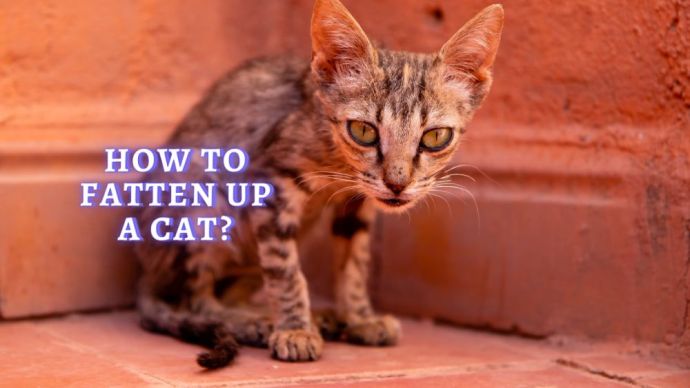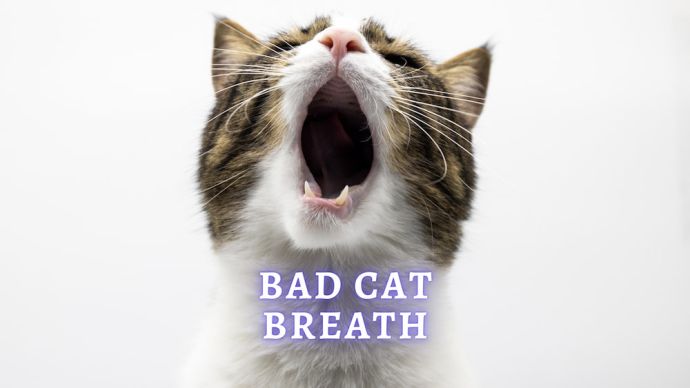Cat Limping: Why Is My Cat Limping?
Written by:
Author: Marissa Prizio
Marissa Prizio attended the University of New Hampshire and earned a bachelor's degree in biomedical Animal Science. Marissa has always enjoyed writing; she was even mixing literature classes into her science major in college. During her writing career, she has edited eBooks, written for a variety of websites, and created audio-visual courses for sustainability.
View all 36 articlesLearn about our editorial process and veterinary review board.
Viewed: 10831
Updated on: 09/03/2021
Figure out what is bothering your furry friend so they can get back to their healthy and happy lifestyle!
Our acrobatic feline friends tend to fill our lives with laughter, entertainment, and some serious shenanigans. While cats may be known for always landing on their feet and being very agile, this does not make them invincible. If you see your cat limping, there’s a good chance that something is wrong. Luckily, limping in cats can be treated to varying degrees depending on its cause.
Want to help your cat heal their limp so they can go back to their playful lifestyle? You will first have to understand and explore the common causes of limping in cats. Don’t worry; all that information has been professionally curated for you, as well as tips to help you determine when it is time to see the vet.
Here’s to less limping and more purring!
Common Causes Of Limping In Cats
Limping is a general term that refers to a walk with reduced weight-bearing on one or multiple legs. In some cases, they may put light pressure on the injured leg, allowing only their toes to touch the ground, and in other cases, they will hold the leg above the ground and completely cease using it. If your cat is limping, there is a good chance that your cat is in pain.
Even the slightest reduction in weight-bearing on any leg will cause your cat’s gait to change, often making their motions look jerky and less smooth than normal. This is a limp, and it can appear in a variety of ways since it is the result of a variety of conditions. Let’s take a look at the usual causes behind cat limping.
1. Wounds
Wounds are known as damaged areas of the skin or bodily tissues. Most people are familiar with wounds like cuts, scrapes, and bite marks that are visible from the outside. There are also wounds that can be less obvious because they are closed and lay within the skin or underlying tissues. [1]
Regardless of what kind of wound it is, this form of damage on a leg or paw pad can easily generate pain. Similar to the cuts or scrapes we experience, wounds on cats hurt more if pressure is applied. To avoid intense pain from a leg or paw pad wound, your cat will likely reduce pressure on the affected limb, causing it to limp.
Wounds can come from a variety of circumstances. If your cat goes outdoors, it could really be anything, but injuries can happen indoors, too, since cats are masters at getting into trouble. A catfight, a thorn in your cat’s paw, or taking a fall are just a few of the ways your cat could have obtained a wound.
You may never know how your cat got hurt, but you can still help them! Wounds can be treated, but open wounds are often a bit tricky. All of your pet’s fur, their constant licking of the wound, and the wound’s chances of getting dirty make for a difficult healing process.
Veterinarians tend to treat wounds by cleaning, assessing, and sometimes bandaging them. They may prescribe specific home care or offer antibiotics if there is a suspicion of contamination or infection. While this process may sound simple, it is very specific to each wound and pet. Improper cleaning, bandaging, or the use of human medication could worsen your cat’s health, so professional treatment is advised. [1]
2. Nail Damage
Your cat’s claws may be more complicated than you think. Those tiny razor blades have a center of blood vessels and nerves called a quick, which is similar to our nail beds. [2] If your cat scratches something and gets their nail stuck or lands on it the wrong way, they could cause it to break.
A broken nail exposes the nerves of their quick, leading to a lot of pain from a seemingly small injury. Cats will often avoid using a paw with a broken nail all together, and they may whine in discomfort. They may lick the area where the nail is broken, and sometimes a broken nail can result in a lot of bleeding. [2]
Treating a broken nail normally starts with controlling the bleeding. Once the bleeding has stopped, any loose fragments of the broken nail are removed, so they don’t get caught again and tear further. Since the quick is attached to bones in the foot, avoiding infection is very important. Veterinarians may prescribe antibiotics to prevent infection and pain meds for comfort. [2]
It’s worth noting that you can reduce your cat’s chance of nail damage by keeping their nails well-trimmed!
READ MORE: How to Restrain a Cat to Clip Nails?
3. Strains And Tears
Muscles are what your cat uses to walk, so it should be no surprise that they limp when they tear or strain a muscle. This is an injury that can be caused by over-extending during physical activities or by trauma, like a deep cut. How your cat limps with a torn muscle is highly dependent on what muscle was damaged and how badly. [3]
Torn muscles are difficult to see since any swelling or bruising is generally hidden by fur. An experienced veterinarian will be able to feel and assess a muscle tear. A strained muscle may heal with a few days of rest and a slow reintroduction to activity. For a torn muscle, your vet may recommend you give your cat prescribed pain control and cold compresses in conjunction with multiple days of restricted activity. [3]
It is worth noting that tears can also happen to ligaments and tendons. Much like muscle tares, this is not a visible injury and is mostly seen as limping. While trama is a factor in this injury, regular wear and tear can also lead to ligament and tendon damage.
Sadly, ligaments and tendons don’t heal as fast as muscles. Depending on the intensity of this injury, your cat may need to be on restricted activity measures for many days or even months. In some cases, your veterinarian may even recommend surgery. [4]
4. Broken Or Fractured Bones
The terms’ broken’ and ‘fractured’ can be used interchangeably when referring to a shattered bone. This condition can also appear in an array of intensities depending on how badly the limb was damaged. Some cats may put light pressure on a broken leg, while others may not bear any weight on it, and the leg may even appear to dangle. [5]
Injuries of this intensity are commonly caused by trauma, like projectiles, being hit by a car, high falls, getting crushed, or being bit by a larger animal. However, a broken leg can also be the result of internal conditions that weaken the bones, like infections, poor nutrition, various disorders, and cancerous growths. [5] Bones can also get dislocated at the joint, which can cause a similar inability to use the affected limb.
Broken limbs have the best chance of healing properly if they are treated immediately. Veterinarians will generally take an x ray to assess the fracture’s location and intensity. While pain medication is almost always involved, other measures like surgery, antibiotics, a cast, or amputation, are dependent on a cat’s specific situation. [5]
5. Arthritis & Joint Issues
Arthritis is a condition that comes with age and results from many factors. It is the result of inflammation and degeneration in the joints, which causes discomfort and stiffness. Cats with arthritis are less likely to jump, may limp on one or more legs, and can be reluctant about being pet in some areas.[6]
Patellar luxation is another condition of bones in the hind legs where the kneecap pops out of place. This causes a skipping motion in the affected legs and may not need treatment. [7]
Cats may also display arthritic symptoms if they have hip dysplasia. This is a condition where the hip bones are not formed properly, causing discomfort and limping in the hind legs. [8] With veterinary prescribed pain medication, proper nutrition, and physical therapy, cats with arthritis can live to a normal life expectancy. Cats with hip dysplasia or patellar luxation, surgery may also be an option.
READ MORE: Best CBD Oils for Cats (Vet Approved)
Is My Cat Experiencing Lameness?
Lameness in cats is defined as the inability to walk normally. This includes any walk that proceeds with limping or the dragging of a limb, as well as the complete inability to walk. Lameness is commonly used in the veterinary field as a general term to encompass issues with mobility that have yet to be fully diagnosed.
If your cat cannot walk normally and notably reduces pressure on one or multiple limbs, they can be described as being lameness. All of the common causes of limping in cats, as listed above, can be the cause of lameness, but many factors can contribute to this condition. [9]
To have your cat’s lameness fully assessed, treated, and hopefully cured, the help of a veterinarian is often needed.
When Is It Time To See A Vet?
Does your cat hate getting in their carrier and going to the vet?
It can be difficult to put your already painful pet through the stress of going to the vet, but in some cases, it may be the only way to help them feel better. Here’s how you can determine when it’s time to take your lame cat to the vet.
1. Identify which leg is lame and assess the leg for visible issues.
You may find a broken nail, a wound, or a foreign item in your cat’s paw. You can always call your vet with these findings, and they will advise you on how to proceed, be that home treatment or a visit. [10] If you can’t identify a visible issue, like a wound, move on to step two.
2. Consider how long your pet has been lame for and what’s the intensity.
The following points should help, and if you answer yes to any of them, it is worth contacting a veterinarian. [10]
- Has your cat limped for over 24 hours with no improvement after rest?
- Has their limp prevented them from daily activities, like eating and going to the litter box?
- Do you know that they have been in a traumatic incident such as a fall?
- The sooner you have your pet cared for, the sooner they can be free of pain!
Frequently Asked Questions:
Why is my cat limping all of a sudden?
When you suddenly see your cat limp, it can result from recent trauma or long-term wear and tear. Taring a nail, a broken bone, strains, and sprains during play are all possible triggers for the sudden onset of limping.
Should I take my cat to the vet for limping?
Cats are tough animals; they do their best to hide discomfort so they don’t appear weak. If your cat is lame, it generally means they are experiencing an amount of pain that they can’t hide. The best way to assess and treat this pain is with the help of a veterinarian, so give them a call, and you will be able to discuss how to proceed.
What should I do if my cat is limping?
If your cat is limping, you should identify the injured leg(s), assess the leg for obvious damage, and determine how much this limp is preventing your cat from doing. A few days of rest may help if it is minor, but more serious situations with open wounds and immobility should be assessed by a veterinarian.
Can a limping cat heal itself?
Limps caused by minor tendon or muscle sprains may heal from a period without activity, while limps from arthritis will not improve without veterinary treatment. Broken bones may also heal over time, but their chances of healing properly without veterinary care is slim, so it is always worth getting a professional opinion.
Article Sources:
- Llera, Ryan. “Care of Open Wounds in Cats.” VCA Animal Hospital, vcahospitals.com/know-your-pet/care-of-open-wounds-in-cats.
- Williams, Krista, and Lynn Buzhard. “First Aid for Broken Nails in Cats.” VCA Animal Hospital, vcahospitals.com/know-your-pet/first-aid-for-broken-nails.
- Gollakner, Rania. “Muscle Tears in Cats.” VCA Animal Hospital, vcahospitals.com/know-your-pet/muscle-tears-in-cats.
- Hauser, Wendy. “Cruciate Ligament Injuries in Cats.” ASPCA Pet Health Insurance, 18 Feb. 2021, aspcapetinsurance.com/resources/cat-cruciate-ligament-injury/.
- Khuly, Patty . “Does My Cat Have a Broken Leg? Signs & Treatment.” Hill’s Pet, 5 Mar. 2021, hillspet.com/cat-care/healthcare/cat-broken-leg-causes-symptoms-treatment.
- “Hip Dysplasia.” Cornell University College of Veterinary Medicine, 22 May 2018, vet.cornell.edu/departments-centers-and-institutes/cornell-feline-health-center/health-information/feline-health-topics/hip-dysplasia.
- Hunter, Tammy, and Cheryl Yuill. “Luxating Patella in Cats.” VCA Animal Hospital, vcahospitals.com/know-your-pet/luxating-patella-in-cats.
- Downing, Robin. “Arthritis in Cats.” VCA Animal Hospital, vcahospitals.com/know-your-pet/arthritis-in-cats.
- Perry, Karen. “Forelimb Lameness in Cats: Sources and Solutions.” BSAVA Library, 1 Apr. 2019, bsavalibrary.com/content/chapter/10.22233/9781910443699.ch54sec1.
- Buzhardt, Lynn. “First Aid for Limping Cats.” VCA Animal Hospita, vcahospitals.com/know-your-pet/first-aid-for-limping-cats.
 Cat Care How to Get an Aggressive Cat Into a Carrier? 6 Methods to Get a Cat Into a Carrier
Cat Care How to Get an Aggressive Cat Into a Carrier? 6 Methods to Get a Cat Into a Carrier - 1602
- 0
 Cat Care Can Cats Get Kennel Cough? Symptoms, Treatment and Prevention (Vet Approved)
Cat Care Can Cats Get Kennel Cough? Symptoms, Treatment and Prevention (Vet Approved) - 56
- 0
 Cat Care Can Cats Eat Catnip? Are There Any Health Benefits to Cats Eating Catnip?
Cat Care Can Cats Eat Catnip? Are There Any Health Benefits to Cats Eating Catnip? - 97
- 0
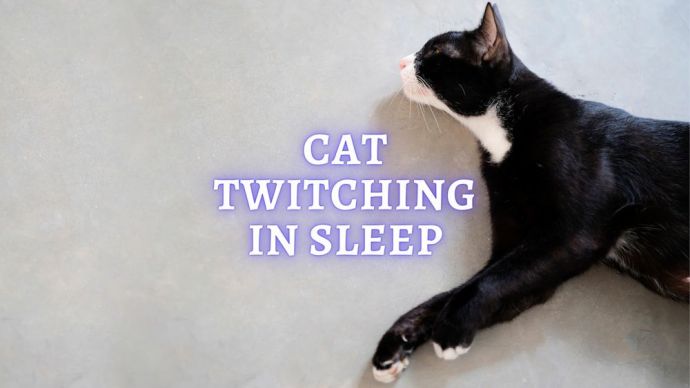 Cat Care Cat Twitching in Sleep: How to Know Cat Twitching in Sleep or Having Seizure
Cat Care Cat Twitching in Sleep: How to Know Cat Twitching in Sleep or Having Seizure - 384
- 0
 Cat Care Why Does My Cat Attack My Legs? 10 Reasons Why and What To Do About It (Vet-Approved Advice)
Cat Care Why Does My Cat Attack My Legs? 10 Reasons Why and What To Do About It (Vet-Approved Advice) - 46013
- 21
 Cat Veterinary Tips Cat Stomach Gurgling: Vet Advice on Why is Your Cat Stomach Gurgling?
Cat Veterinary Tips Cat Stomach Gurgling: Vet Advice on Why is Your Cat Stomach Gurgling? - 36469
- 4
 Cat Veterinary Tips My Cat Lost its Voice: Can Cats get Laryngitis? (Vet Advice)
Cat Veterinary Tips My Cat Lost its Voice: Can Cats get Laryngitis? (Vet Advice) - 23554
- 13









